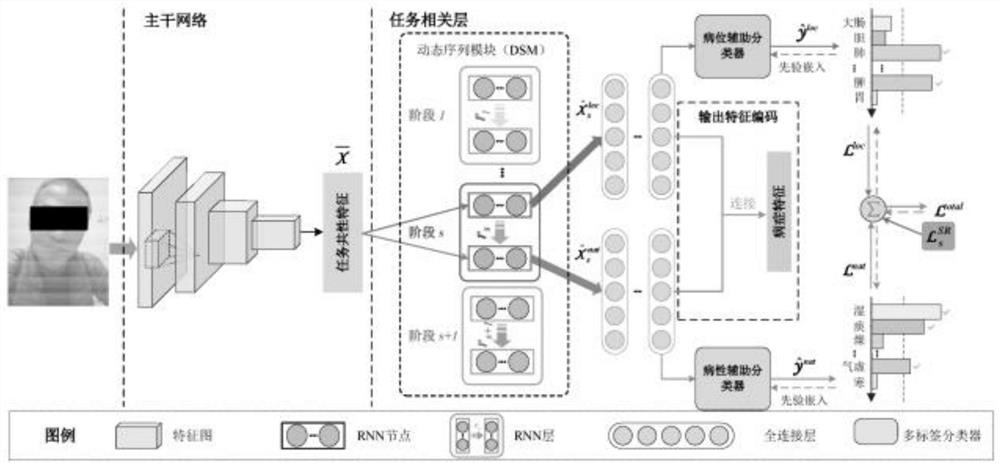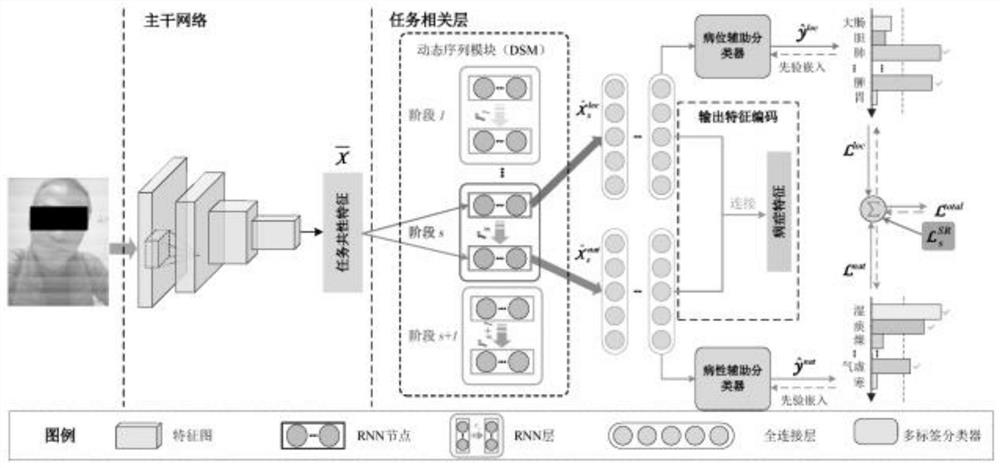Visceral organ feature coding method based on face image multi-stage relationship learning
A technology of internal organs and face images, applied in the field of machine learning, can solve the problems of expensive label data collection and insufficient model generalization ability to effectively express the distinguishing characteristics of data, so as to achieve the effect of improving pertinence
- Summary
- Abstract
- Description
- Claims
- Application Information
AI Technical Summary
Problems solved by technology
Method used
Image
Examples
Embodiment Construction
[0034] The following will clearly and completely describe the technical solutions in the embodiments of the present invention with reference to the accompanying drawings in the embodiments of the present invention. Obviously, the described embodiments are only some, not all, embodiments of the present invention. Based on the embodiments of the present invention, all other embodiments obtained by persons of ordinary skill in the art without making creative efforts belong to the protection scope of the present invention.
[0035] The embodiment of the present invention discloses a method for encoding features of internal organs based on multi-stage relationship learning of face images, which includes the following steps:
[0036] A feature encoding method for internal organs based on multi-stage relationship learning of face images, comprising the following steps:
[0037]S1, data collection: collect the user's face image, and label each image with two sets of labels about human...
PUM
 Login to View More
Login to View More Abstract
Description
Claims
Application Information
 Login to View More
Login to View More - R&D
- Intellectual Property
- Life Sciences
- Materials
- Tech Scout
- Unparalleled Data Quality
- Higher Quality Content
- 60% Fewer Hallucinations
Browse by: Latest US Patents, China's latest patents, Technical Efficacy Thesaurus, Application Domain, Technology Topic, Popular Technical Reports.
© 2025 PatSnap. All rights reserved.Legal|Privacy policy|Modern Slavery Act Transparency Statement|Sitemap|About US| Contact US: help@patsnap.com



